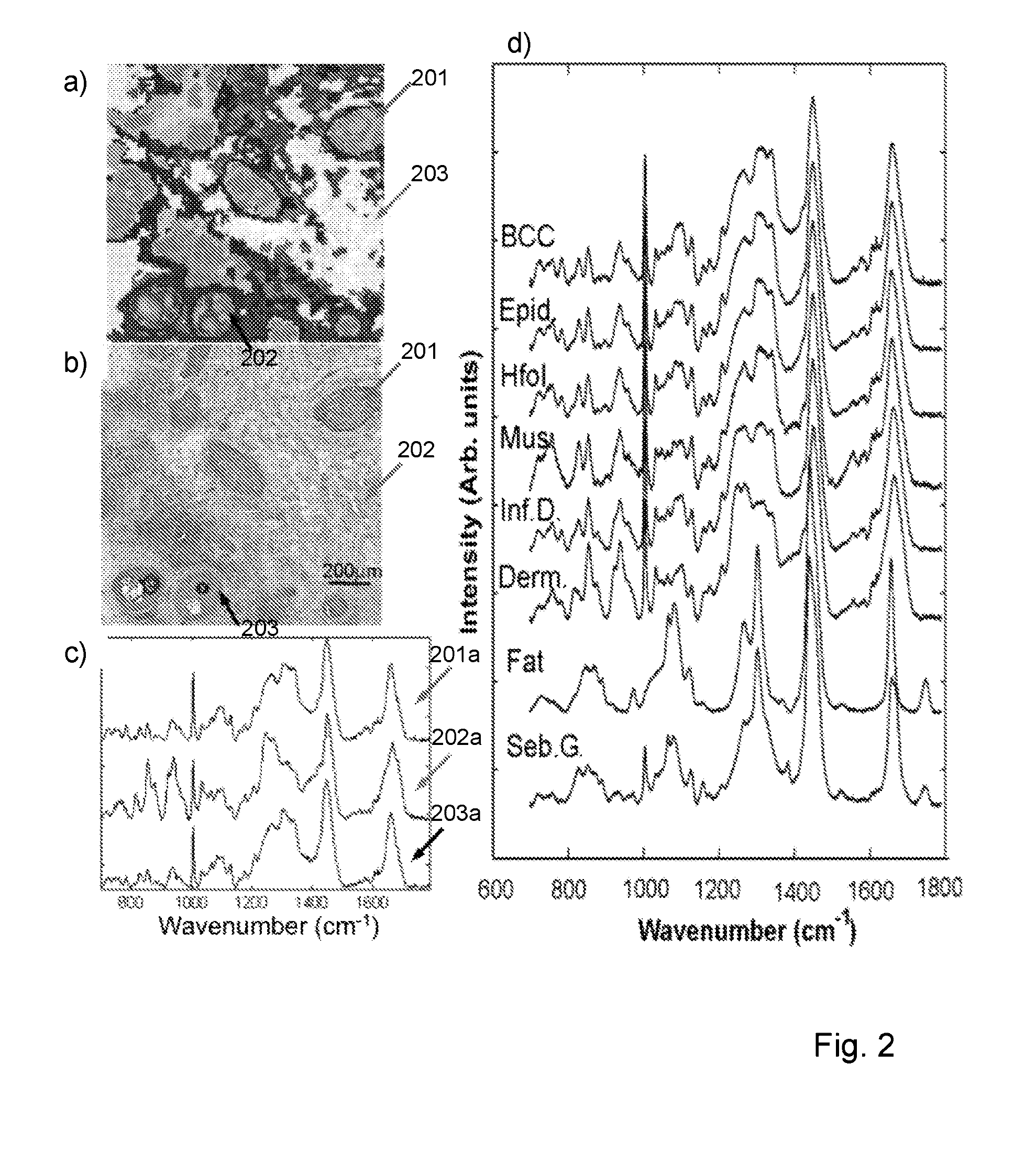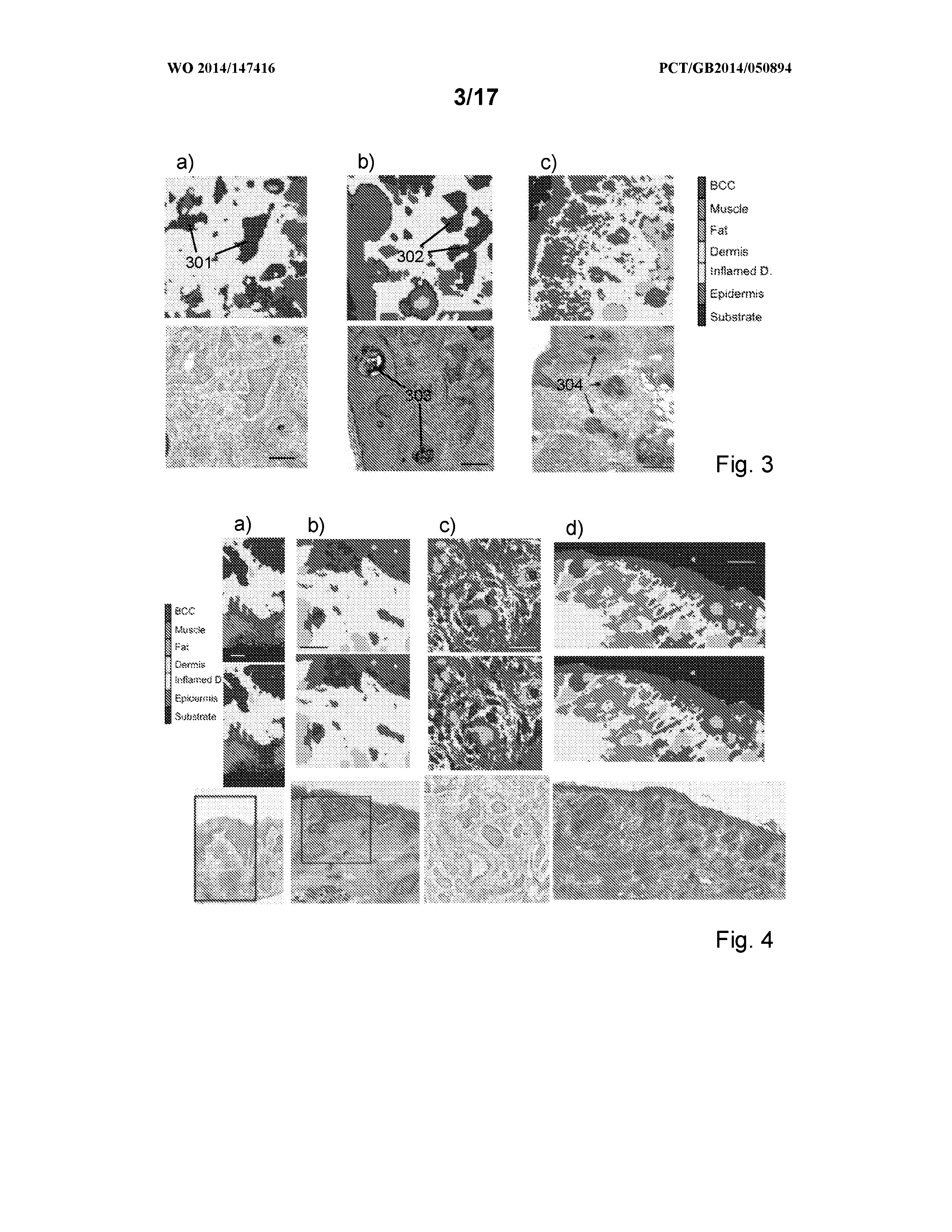Measurement of tissue structures
a tissue structure and tissue technology, applied in the field of tissue structure measurement and classification, can solve the problems of significant tissue destruction and dysfunction, inequitable health service provision, additional morbidity for bcc sufferers, and deferred cost to the nhs
- Summary
- Abstract
- Description
- Claims
- Application Information
AI Technical Summary
Benefits of technology
Problems solved by technology
Method used
Image
Examples
Embodiment Construction
[0035]Aspects and embodiments of the invention are described in further detail below by way of example and with reference to the enclosed drawings in which:
[0036]FIG. 1 is a schematic diagram of an apparatus according to an embodiment of the invention;
[0037]FIGS. 2a and 2b are images of a tissue sample derived from Raman spectra assignment (FIG. 2a) and conventional HE staining (FIG. 2b);
[0038]FIG. 2c is a plot of mean spectra for three different tissue structures in the sample of FIGS. 2a and 2b;
[0039]FIG. 2d is a series of plots for mean Raman spectra for various tissue structures;
[0040]FIGS. 3a to 3c are raster scanned Raman spectrometry images and corresponding HE stained histopathology images of tissue sections (scale bar=200 μm);
[0041]FIGS. 4a to 4d are raster scanned Raman spectrometry images and corresponding HE stained histopathology images of unsectioned tissue blocks (scale bar=200 μm);
[0042]FIG. 5a is an autofluorescence intensity image of a sample taken with 377 nm inc...
PUM
 Login to View More
Login to View More Abstract
Description
Claims
Application Information
 Login to View More
Login to View More - R&D
- Intellectual Property
- Life Sciences
- Materials
- Tech Scout
- Unparalleled Data Quality
- Higher Quality Content
- 60% Fewer Hallucinations
Browse by: Latest US Patents, China's latest patents, Technical Efficacy Thesaurus, Application Domain, Technology Topic, Popular Technical Reports.
© 2025 PatSnap. All rights reserved.Legal|Privacy policy|Modern Slavery Act Transparency Statement|Sitemap|About US| Contact US: help@patsnap.com



